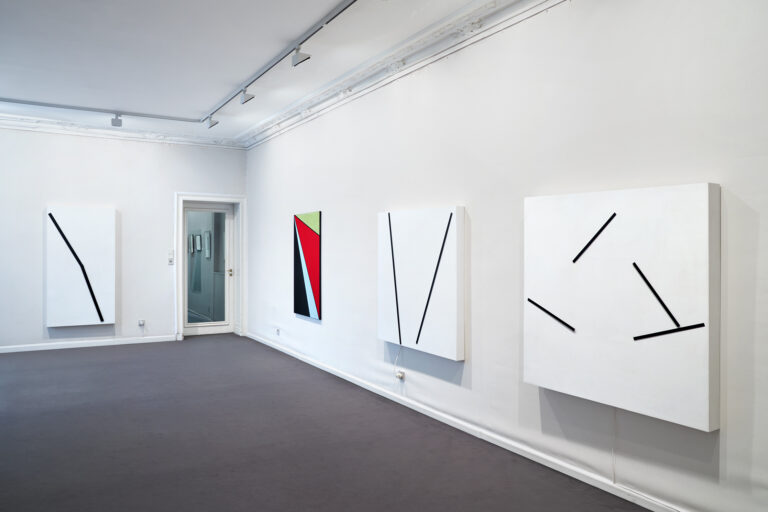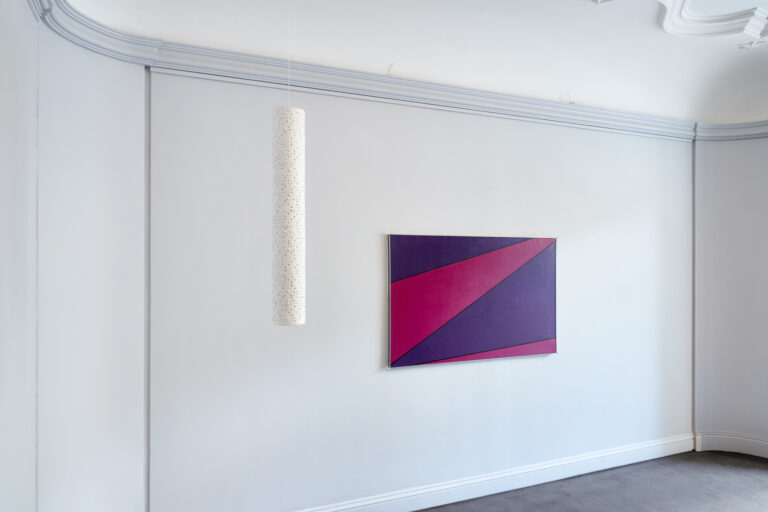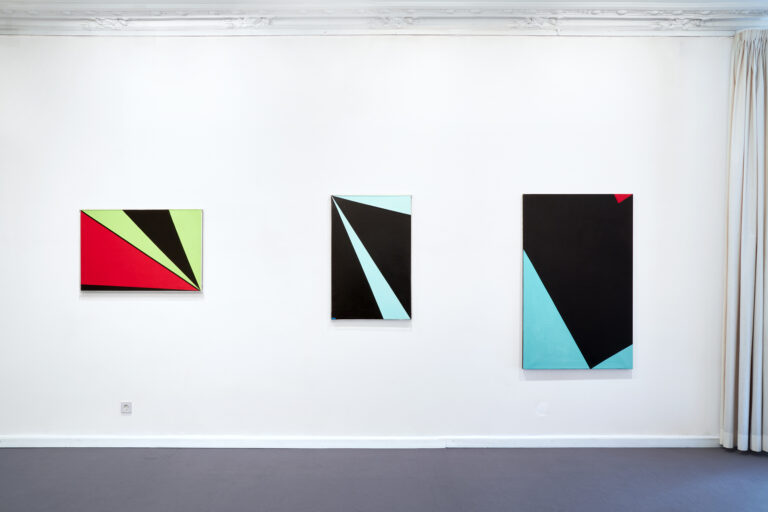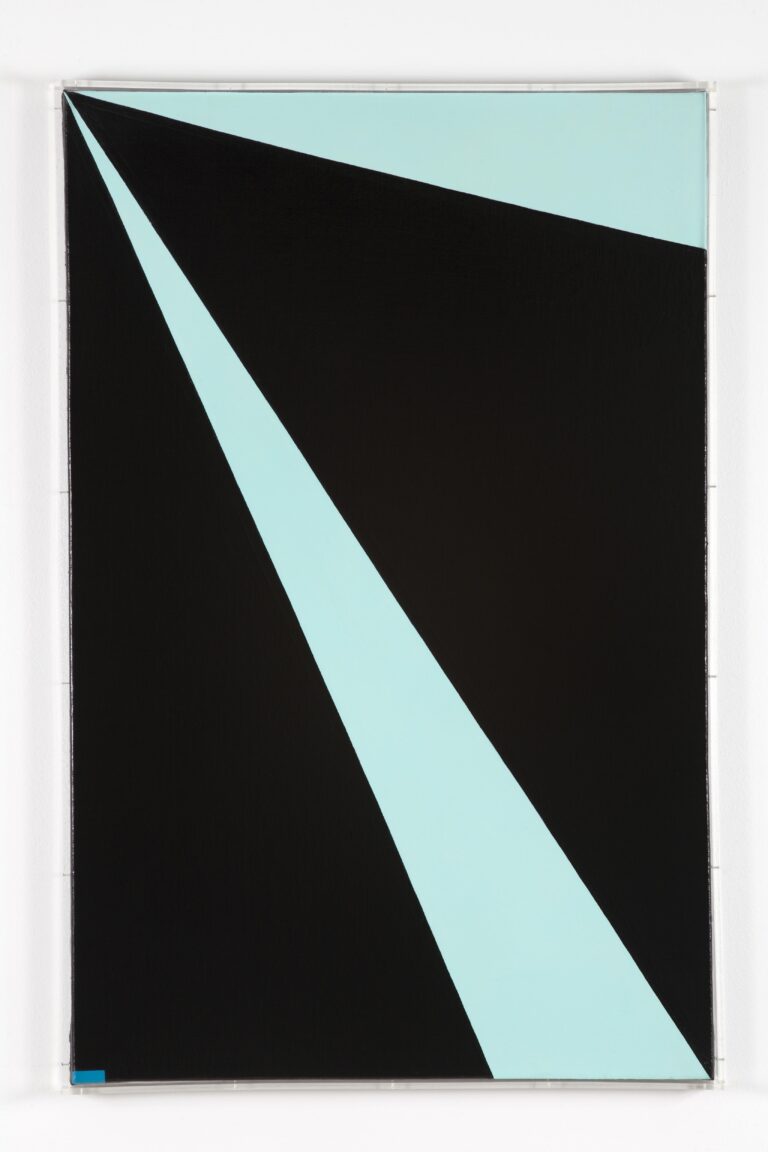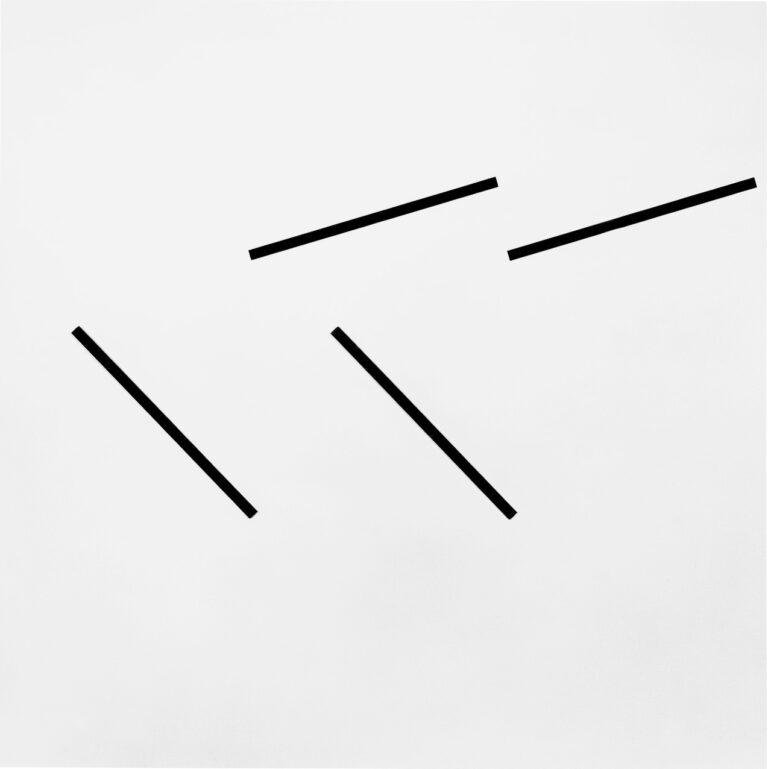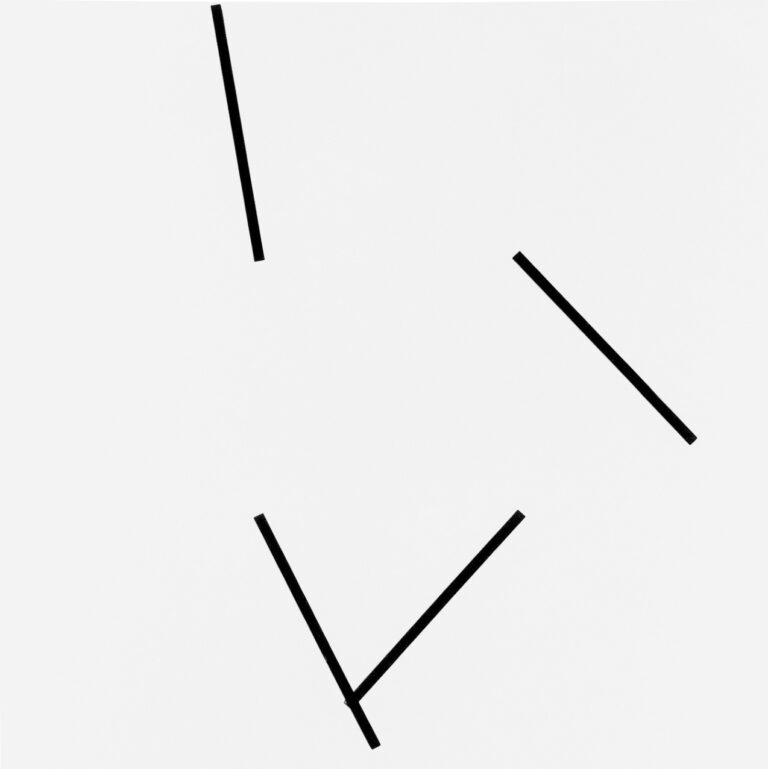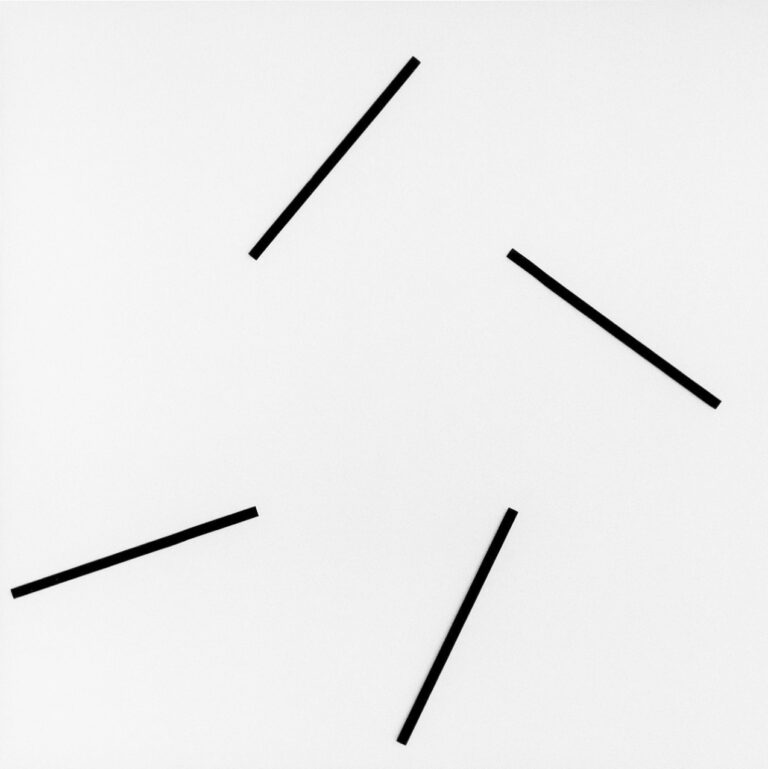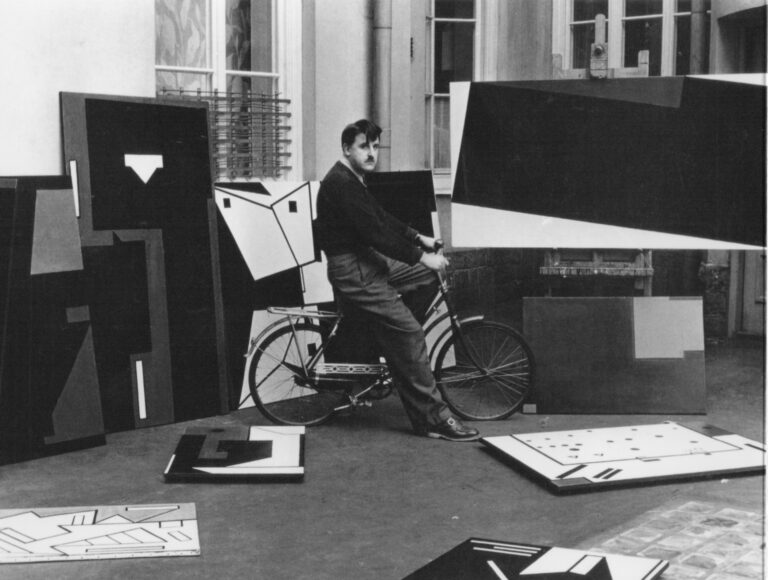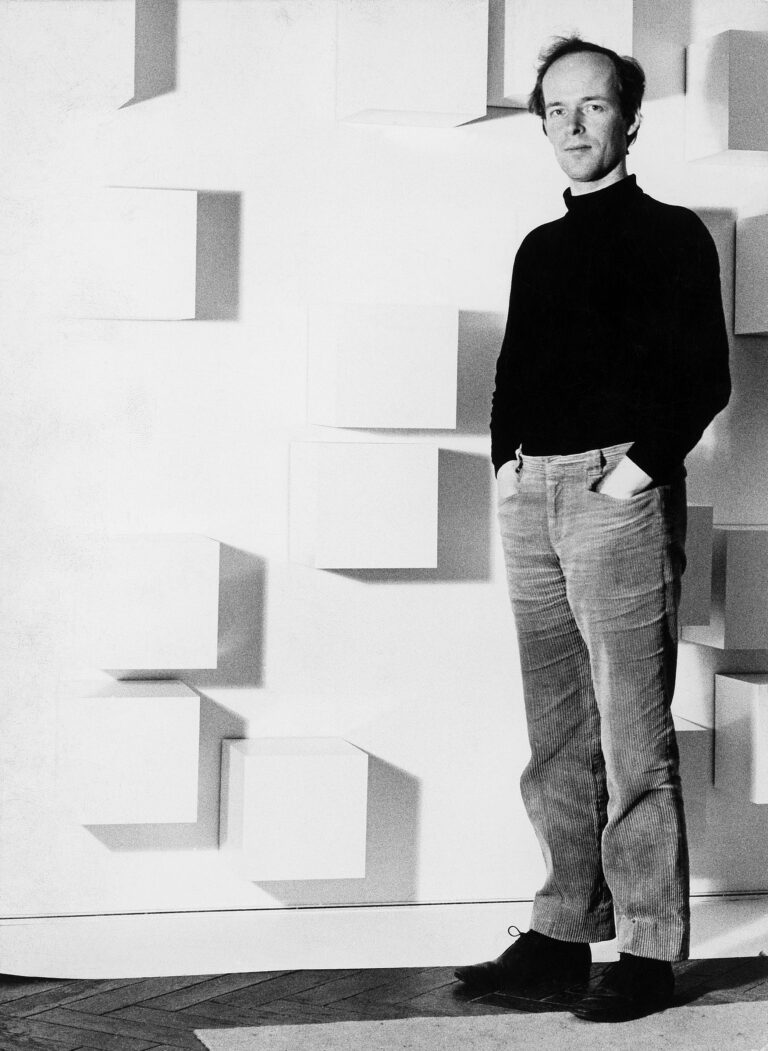Olle Bӕrtling, Gerhard von Graevenitz
Our Gallery Weekend exhibition brings together two artists who deal with aspects of geometric abstraction and movement, thus embedding their works in the artistic movement called concretism or constructivism.
The swedish Olle Bӕrtling (1911–1981) was very present in the European art scene of the 1950s / 1960s, he counted among the artists chosen by Denise René to build up her non-figurative gallery program and in post-war studies on abstraction, such as the writings of Michel Seuphor, Bernard Dorival or Will Grohmann, he was an established figure.
The selection of paintings on view by Bӕrtling reveals how the artist developed his characteristic diagonal style since 1953. Black lines divide the surface of the painting into plain, glazed colour fields and a palette reduced to black, red, green or yellow contrasts these acute-angled areas. However, the intersection of the framework of lines is outside the canvas and with this imaginary crossing of diagonals, Baertling’s paintings set impulses into the surrounding space.
The german artist Gerhard von Graevenitz (1934–1983), one of the co-founders of ‘New Tendencies’ in 1961, belonged to the younger generation of constructive-concrete artists. He developed a kinetic art with an emphasis on processes that incorporate chance as an aesthetic category. Von Graevenitz considers kinetic art as a research on perception and puts a strong focus on an active participation of the spectator and the individual aesthetic experience.
The kinetic objects on show with us, executed 1975–1978, belong to the work period starting in the mid-1960s, in which a reduction to only a few moving elements mounted on a basic geometric form takes place: On a white square background, black strips move independently of each other so slowly that it is possible for the spectator to capture the overall image that is always being created anew by chance.
“In order to accentuate the kinetic motion—the after-images and the stroboscopic movement that arises in the borderline and the color field – I started modulating the lines. Deviations of a millimeter or so heightened the illusion of motion and, since I was most interested in dynamic motion, this discovery led to extensive experiments with these deviations.”Olle Baertling, Prologue to a Manifesto of Open Form, 1971, in: Olle Bӕrtling. Retrospektive, exh. cat. Kunsthalle Kiel, 2001, p. 171.
Olle Baertling, Prologue to a Manifesto of Open Form, 1971, in: Olle Bӕrtling. Retrospektive, exh. cat. Kunsthalle Kiel, 2001, p. 171.
“One of the central themes in his art is the relationship of a set of systematic starting points—e.g. location, shape and quantity of the rotating elements – to chance, the latter ‘determining’ that an ever new, unpredictable image emerges; the artist’s work takes place in the tension of these two conditions.”
Jaap Bremer, in: Gerhard von Graevenitz, Kinetische Objekten, exh. cat. Van Abbemuseum, Eindhoven, 1979, s. p.

